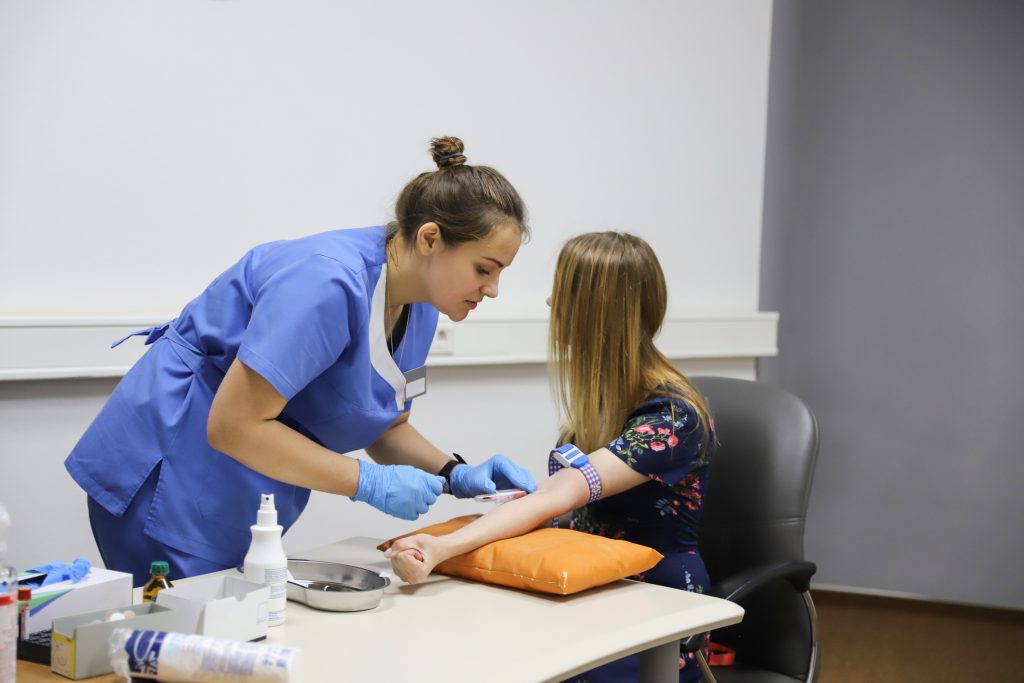Northeast Medical Institute - New Haven Campus Phlebotomy Course & Cna Class Fundamentals Explained
Northeast Medical Institute - New Haven Campus Phlebotomy Course & Cna Class Fundamentals Explained
Blog Article
Northeast Medical Institute - New Haven Campus Phlebotomy Course & Cna Class for Dummies
Table of ContentsNortheast Medical Institute - New Haven Campus Phlebotomy Course & Cna Class for DummiesRumored Buzz on Northeast Medical Institute - New Haven Campus Phlebotomy Course & Cna ClassThe Facts About Northeast Medical Institute - New Haven Campus Phlebotomy Course & Cna Class UncoveredNortheast Medical Institute - New Haven Campus Phlebotomy Course & Cna Class - The FactsExamine This Report about Northeast Medical Institute - New Haven Campus Phlebotomy Course & Cna ClassFacts About Northeast Medical Institute - New Haven Campus Phlebotomy Course & Cna Class Revealed
The usage of such devices should be accompanied by various other infection avoidance and control practices, and training in their usage.For setups with reduced resources, price is a motoring element in purchase of safety-engineered gadgets. Where safety-engineered devices are not available, skilled usage of a needle and syringe is acceptable.
labelling); transport conditions; analysis of outcomes for scientific monitoring. In an outpatient department or center, supply a specialized phlebotomy cubicle containing: a clean surface with 2 chairs (one for the phlebotomist and the other for the individual); a hand wash basin with soap, running water and paper towels; alcohol hand rub. In the blood-sampling room for an outpatient division or center, supply a comfortable reclining sofa with an arm rest.
The Greatest Guide To Northeast Medical Institute - New Haven Campus Phlebotomy Course & Cna Class
Make certain that the indicators for blood sampling are clearly defined, either in a composed protocol or in documented instructions (e.g. in a research laboratory form). In any way times, follow the approaches for infection prevention and control provided in Table 2.2. Infection avoidance and control methods. Accumulate all the equipment required for the procedure and location it within safe and simple reach on a tray or trolley, making sure that all the items are plainly noticeable.
Where the individual is grown-up and aware, adhere to the actions described listed below. Present yourself to the individual, and ask the patient to specify their complete name. Inspect that the research laboratory type matches the person's identification (i.e. match the patient's details with the research laboratory kind, to ensure accurate identification). Ask whether the patent has allergies, phobias or has ever passed out during previous injections or blood attracts.
Make the person comfy in a supine setting (if feasible). The person has a right to reject a test at any time prior to the blood sampling, so it is vital to make sure that the client has recognized the procedure - Phlebotomy Training.
Fascination About Northeast Medical Institute - New Haven Campus Phlebotomy Course & Cna Class
Extend the individual's arm and evaluate the antecubital fossa or lower arm. Situate a blood vessel of a good size that shows up, straight and clear. The diagram in Section 2.3, shows typical placements of the vessels, but numerous variants are feasible. The median cubital capillary exists between muscle mass and is usually one of the most simple to penetrate.
DO NOT put the needle where blood vessels are drawing away, due to the fact that this increases the chance of a haematoma. The blood vessel should show up without applying the tourniquet. Locating the vein will help in figuring out the right dimension of needle. Use the tourniquet about 45 finger sizes above the venepuncture site and re-examine the blood vessel.
Haemolysis, contamination and presence of intravenous liquid and medicine can all change the results (39. Nursing personnel and medical professionals might access central venous lines for samplings complying with protocols. Specimens from main lines carry a danger of contamination or wrong laboratory test results. It serves, however not excellent, to injure specimens when initial introducing an in-dwelling venous gadget, prior to linking the cannula to the intravenous fluids.
The Basic Principles Of Northeast Medical Institute - New Haven Campus Phlebotomy Course & Cna Class
Failure to permit adequate call time raises the threat of contamination. DO NOT touch the cleansed website; in particular, DO NOT position a finger over the blood vessel to assist the shaft of the subjected needle.
Ask the individual to form a clenched fist so the veins are extra noticeable. Get in the blood vessel quickly at a 30 degree angle or less, and remain to present the needle along the blood vessel at the simplest angle of entry - CNA Classes. When adequate blood has been gathered, launch the tourniquet BEFORE taking out the needle
3 Simple Techniques For Northeast Medical Institute - New Haven Campus Phlebotomy Course & Cna Class
Take out the needle delicately and apply gentle stress to the site with a tidy gauze or dry cotton-wool round. Ask the client to hold the gauze or cotton woollen in place, with the arm extended and raised. Ask the client NOT to flex the arm, because doing so causes a haematoma.

What Does Northeast Medical Institute - New Haven Campus Phlebotomy Course & Cna Class Mean?
Do not push the syringe bettor due to the fact that additional pressure enhances the danger of haemolysis. Where feasible, maintain the tubes in a rack and relocate the shelf in the direction of you. Infuse downwards into the suitable coloured stopper. DO NOT remove the stopper since it will release the vacuum. If the sample tube does not have a rubber stopper, infuse extremely slowly into television as minimizing the stress and rate made use of to move the sampling minimizes the risk of haemolysis.

Report this page